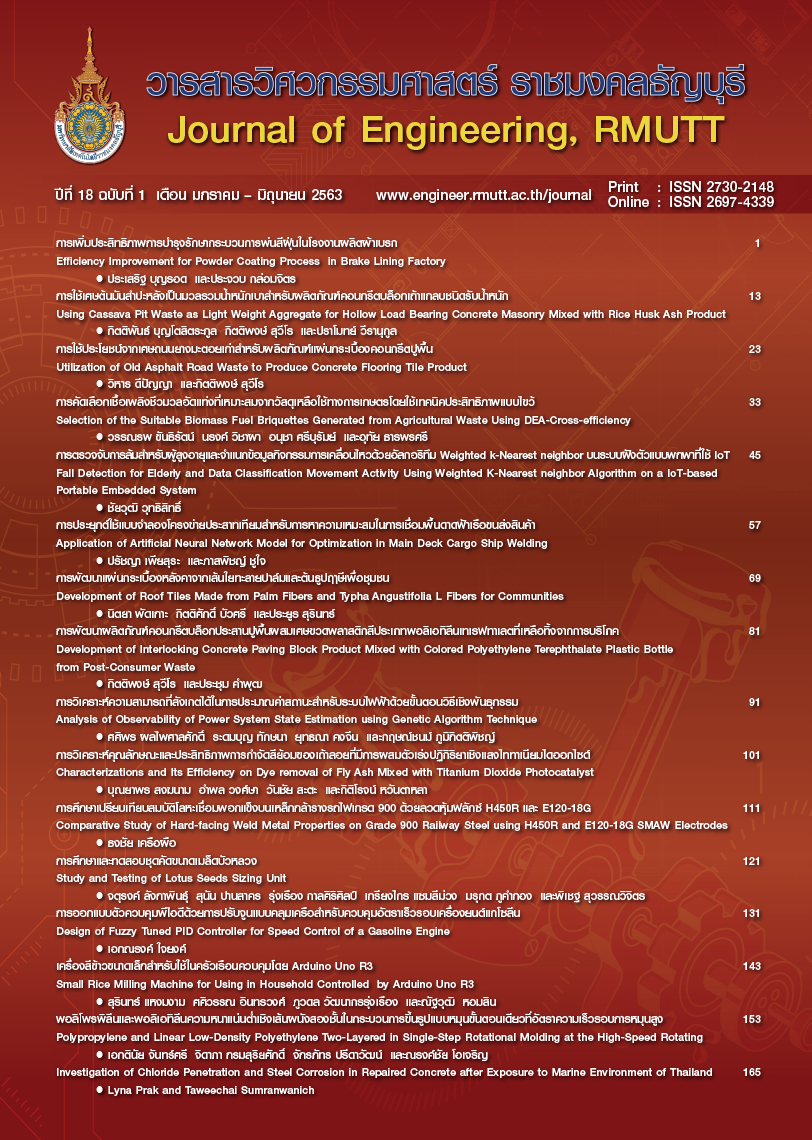Analysis of Observability of Power System State Estimation using Genetic Algorithm Technique
Main Article Content
Abstract
This paper presents an analysis of observability in state estimation of instruments for electrical systems using genetic algorithm technique. This proposed algorithm can be solved for preventing the instruments from the measurement data missing in electrical power systems, and for installing the instruments in all bus standards. The goal of this research focuses on the minimum number of instruments and their most appropriate locations for electrical systems. Besides the state estimation of instruments by using genetic algorithm technique to find the minimum number of instruments and their most appropriate locations, the analysis of observability can be used to find the variables affecting the instrumentation equations. This is experimented on the basis of the IEEE 14 bus standard instead of the electrical system. The simulation results found that the instruments in electrical systems had a total of 122 sets, but after installing the instruments using a genetic algorithm technique, the number of instruments decreased by 56 sets. Also, the technique was used with the AMR instruments in electrical systems with a total of 42 set, the instruments decreased by 13 sets. The decreased number of instruments could function efficiently.
Article Details
The manuscript, information, content, picture and so forth which were published on Frontiers in engineering innovation research has been a copyright of this journal only. There is not allow anyone or any organize to duplicate all content or some document for unethical publication.
References
Molina-Moreno I, Medina-Rios A, CisnerosMagania R, Anaya-Lara O. A methodology for transient state estimation based on numerical derivatives optimal monitoring and filtered measurements. IEEE Transactions on Power Delivery. 2017 9 Aug. 33(4):1-8.
Abur A. Observability and dynamic state estimation. Proceeding of IEEE Power and Energy Society General Meeting; 2015 July. p.1-5.
Kongjeen Y, Inrawong P, Buayai K, Kerdchuen T. Key cutting algorithm application to measurement placement for power system state estimation. energy Procedia. 2013. 34:142-47.
Kumar A, Das B. Genetic algorithm-based meter placement for static estimation of harmonic sources. IEEE Transactionson Power Delivery. 2005 May. 20(2): 1088-96.
Kerdchuen T, Ongsakul W, Boonchaim P. Improving of measurement system for state estimation. EECON30: Proceeding of Electrical Engineering Conference.2007 Oct 25-26. Felix Riverkwai, Kanchanaburi. p. 1-4. (in Thai)
D'Antona G, Muscas C, Sulis S. State estimation for the localization of harmonic sources in electric distribution systems. IEEE Transactions on Instrumentation and Measurement. 2009 June. 58(5): 1462-70.
Asprou M, Kyriakides E, Albu M. The effect of variable weights in a WLS state. IEEE Transactions on Instrumentation and Measurement. 2014 June. 63(6):1484- 95.
Ghiocel S G, Chow J H, Stefopoulos G,Fardanesh B, Maragal D, Bertagnolli D B. Phasor measurement based state estimation for synchro phasor data quality improvement and power transfer interface monitoring. IEEE Transactions on Power System. 2014 March. 29(2): 881-8.
Qin J. A new optimization algorithms and Its application key cutting algorithms. GSIS2009: Proceeding of 2009 IEEE International Conference on Gray Systems and Intelligent Services. 2009 Nov 10-12. Nanjing, China. p. 1-6.


